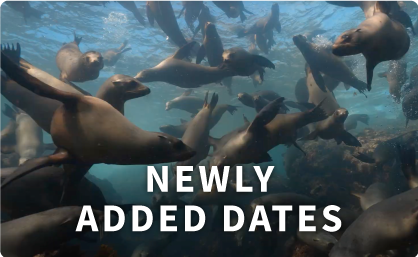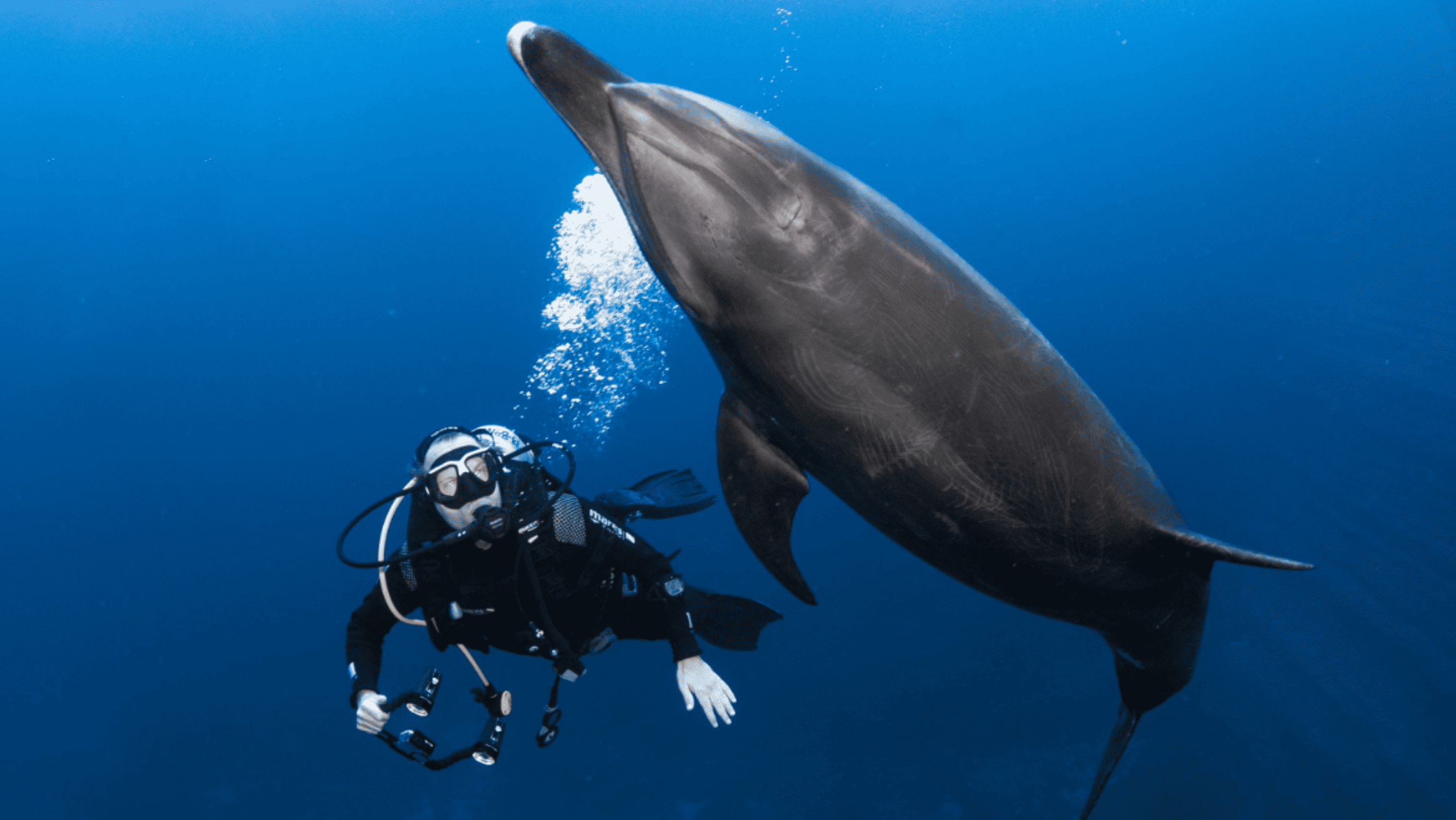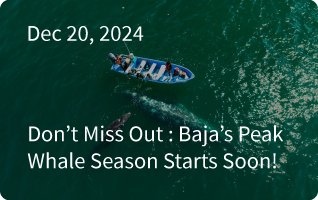Is it ok to touch gray whales?
2022-01-11
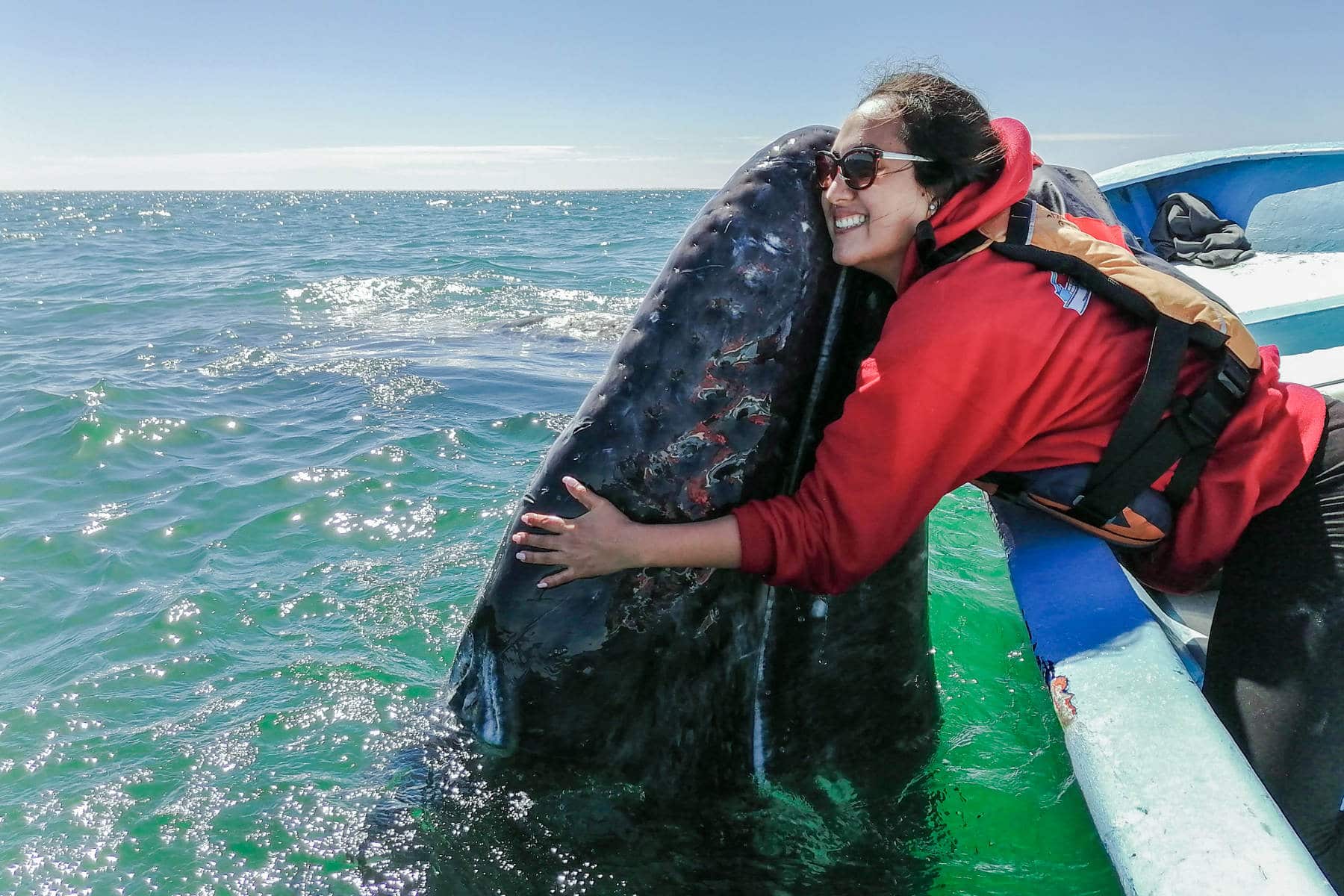
The answer is that it depends on whether it’s ok to touch whales!
We don’t mean to cop out on this, but it really does depend. The skin of whales is actually soft and very thin and loaded with nerve receptors. Because of the heavy layer of blubber on whales, most of us imagine that whales have tough thick skin but that’s not the case. Dense concentrations of nerve receptors are even more interesting. Scientists believe that whales can actually sense cavitation in seawater as the whale is swimming – cavitation being air bubbles caused by boundary layer separation. The bubbles cause more drag and it’s believed that whales can actually adjust the shape of their bodies to get rid of the cavitation and swim more efficiently.

That’s a very cool ability and something we’ll be thinking about next time we are in the water!
So let’s break down the question of whether it’s ok to touch whales.
Is it injurious to the whale?
Not unless a human is really rough with the whale and damages the whale’s delicate skin. Kissing, stroking and lightly scratching a whale is not injuring them.

Can we pass illness or disease along to the whale?
Whales are susceptible to pneumonia and likely the entire range of pathogenic bacteria. It’s unknown whether gray whales can become ill from Covid19.
Nobody who is sick should go close to a whale. Common sense. Even if you just have a cold or mild flu, you should not be going anywhere near the whales…
Do the whales like being touched?
We think so!
All our interactions in San Ignacio Lagoon are initiated by the whales. We NEVER chase whales or attempt to get close to them.
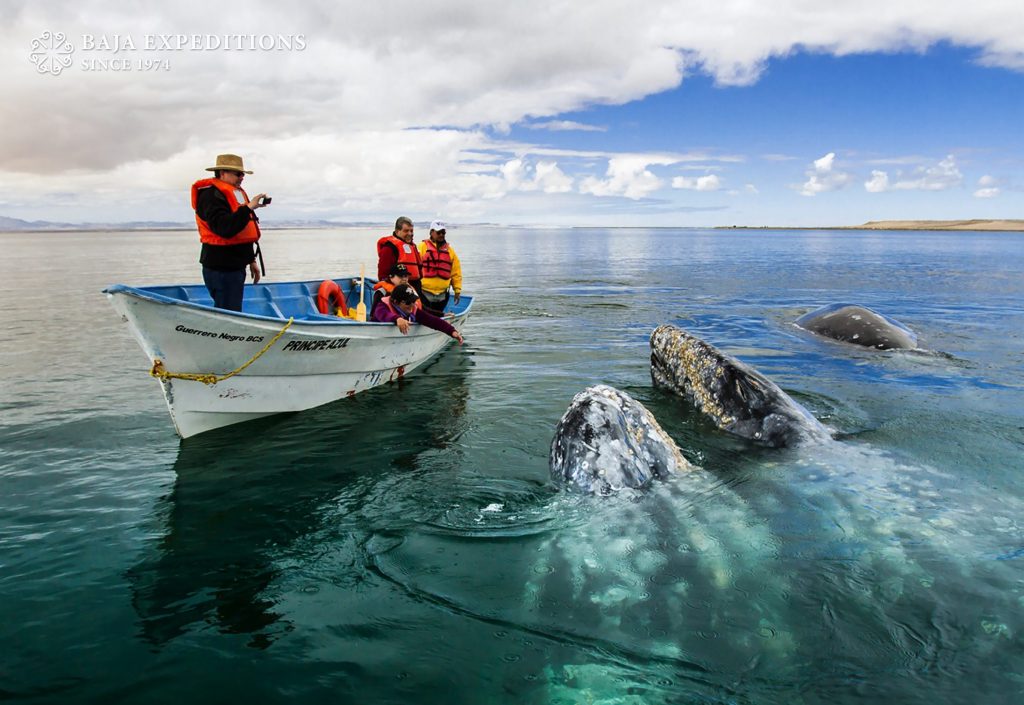
The gray whales of San Ignacio Lagoon have 3/4 of the lagoon to themselves including the top 1/3rd of the lagoon which is the birthing area for baby gray whales.
It is a federal offence in Mexico to interact with the gray whales anywhere outside of the designated watching area. And the number of boats allowed in the watching area at any one time is strictly limited by national park regulations.
As whale watching operators, we actually share in the salary and employment of the whale sheriff who presides over us!
There is no doubt in our minds that the whales enter the watching area when they are interested in interacting with us. ie. when it’s time to play!!
Some whales seem to love hanging out with humans and are regulars. Kind of like Norm in the bar at Cheers!
Other whales stay away from the designated watching area and don’t come close to humans all season.
We think the real answer lies in “Abuelo” Pachico’s first friendly interaction with a gray whale back in 1972.
Up until that morning in beutiful San Ignacio lagoon, whales kept their distance from humans and humans stayed the heck away from mean bad-tempered gray whales.

Pachico described in an interview that he felt overcome by a force he couldn’t describe, energizing him to put his hand in the water next to the giant gray whale floating gently beside his panga. He felt that the surface of the water was like a barrier, one that he could not possibly penetrate. But he did. He pushed his hand into the water through the imagined barrier and felt the whale shift and push itself against his hand. And that day a new era dawned in human-cetacean interaction and that big beautiful gray whale became the first of a long line of whales at San Ignacio Lagoon that want us to reach out and touch them. But of course, and always, only on their terms.
Baja Expeditions is Baja’s pioneering eco-expedition company of almost 50 years. 2021 will be the company’s 29th season at San Ignacio Lagoon.
Author Mike Lever is company President. He and his team have breathed new life, energy, capital and previously unheard levels of luxury into Baja Expeditions. www.bajaex.com



